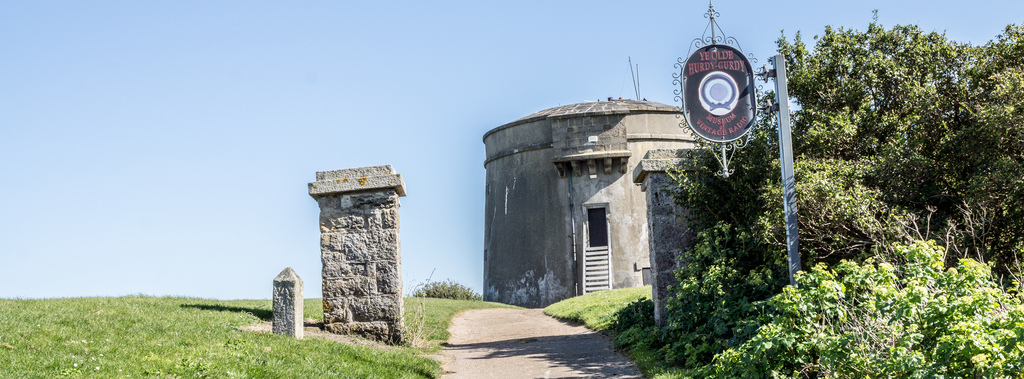The Hurdy Gurdy Museum, officially called Ye Olde Hurdy Gurdy Museum of Vintage Radio, is a Martello Tower that during the Napoleonic wars served as a small defensive fort and is now a radio and communications museum. The few hundred stones that make up this squat building are a hidden attraction that, upon closer inspection and study, tell a story that stretches back to the Napoleonic Wars.
History
In the late 18th century and early 19th century, Britain faced not only a desperate struggle to maintain its rule in Ireland, but more worryingly a deadly threat posed by a potential invasion from France into Britain and Ireland. At this stage Catholic Ireland and Catholic France were allies who shared a mutual enemy: Britain. Britain faced war on two fronts: insurrection from a disgruntled Irish populace to the west; and possible invasion from the French to the east. Therefore, as a show of strength, they built these strong defensive fortresses. These ‘Martello Towers’ can be found in various places along the Irish and English coast. The two more famous in Dublin both have a new purpose: the Hurdy Gurdy Museum of Vintage Radio in Howth (North Dublin), and the James Joyce Museum in Sandycove (South Dublin).

By the 1820s, when the threat from France had faded, the guns were dismantled, and its secondary role – as a signalling station – became the primary role of the tower. The operation as a signalling station would be retained throughout the 19th century. Later, as radio and telephone technology was invented and utilised, the tower would become increasingly important as a primary station for Irish communications with Britain and the rest of the world.
Notable dates in the history of Howth’s Martello Tower include:
- 1852 – first telegraph cable laid.
- 1886 – transfer to postmaster-general and landfall of phone cables between the UK and what is now the Hurdy Gurdy Museum.
- 1903 – radio contact between Howth and Holyhead (Wales).
- 1922 – transfer of control of the Martello Tower to the Irish Free State – the tower’s new role being the prime means of contact between Dublin and the world.
You will notice that a large proportion of these landmarks in communication were between the UK and Ireland. Although our countries, ultimately, were unable to live under the same roof, we are brothers that have never lost the desire to communicate.
For many years after 1825, the tower, alongside its primary role, was also used by the ‘Preventative Water Guard’ – the forerunner of the Coast Guard. The Water Guard’s primary aim was to deter smuggling into Ireland, via Howth.
The tower is a testament to the achievements and history of three nations: the sheer scale and ambition of Napoleonic France led to its construction; the determination of Britain to maintain its own existence set its early tone; and the imagination, ability to adapt, and maturity of the youngest of these three states – The Republic of Ireland – meant that a symbol that once meant suppression could become a symbol of communication for all, whatever their nation.
Pat Herbert – founder & curator
The dynamic energies and vision of a single individual became the driving force that would see this historic edifice become a museum of radio and communication. Pat Herbert, who has a keen interest in history and a sound knowledge of the technology of communication, was given the tower in 2003 by Dublin City Council. Since that year the Hurdy Gurdy Museum of Vintage Radio has housed Pat’s own radio and communication exhibits. The number of exhibits has grown with the popularity of the museum, with donations of radio and communication equipment coming from as far away as Russia.
The museum has a wonderful family atmosphere, which is fostered through its reliance on a dedicated and knowledgeable set of volunteers, headed by Pat Herbert. Pat and his friends are among the most interesting and informed museum teams in all of Ireland. They are ever-ready with a tale of Napoleonic France, the Irish wars of independence, or the first radio contact between Ireland and the UK – all of which will be shared with ease and enthusiasm to any interested visitors to the museum.